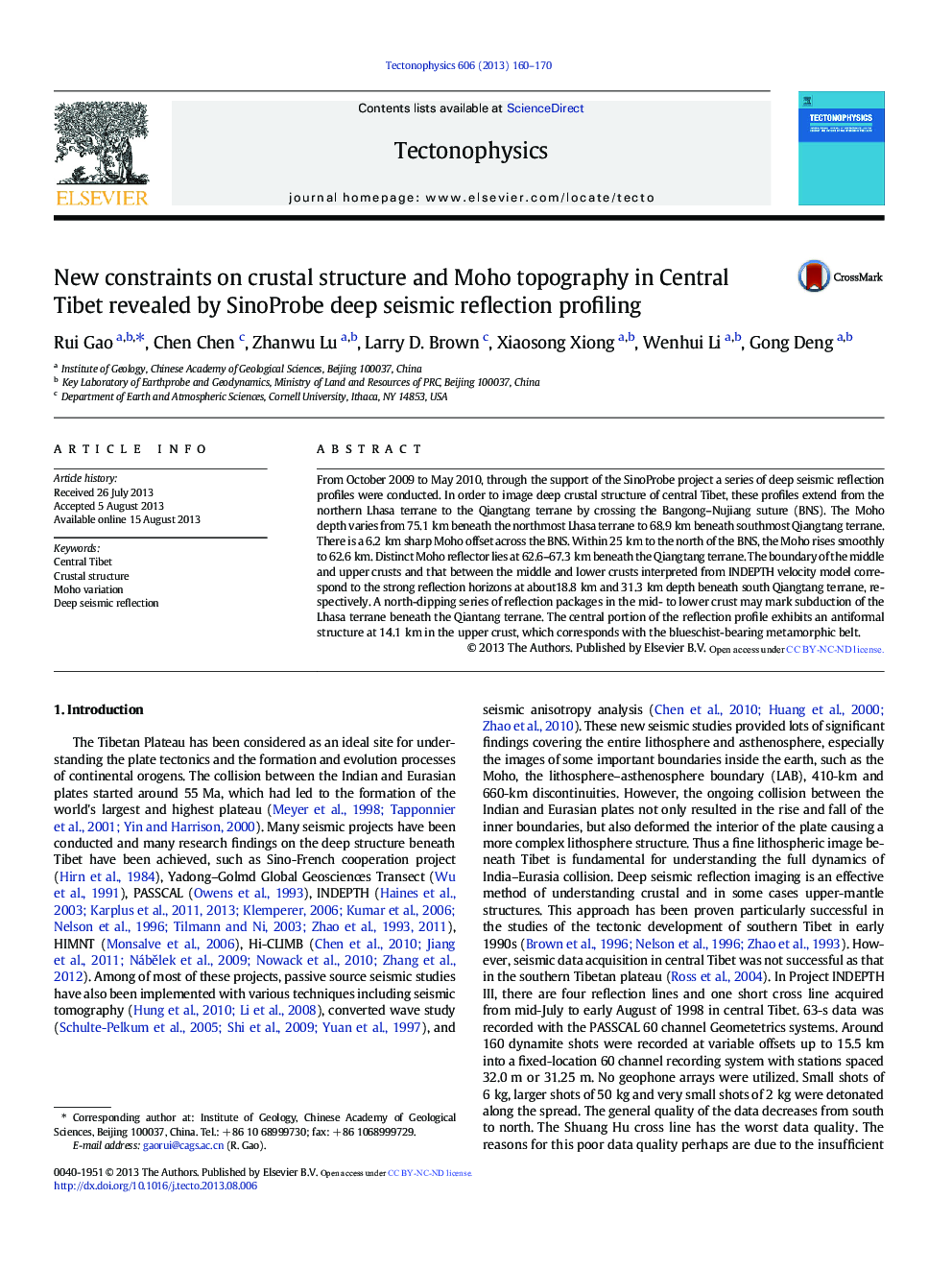| Article ID | Journal | Published Year | Pages | File Type |
|---|---|---|---|---|
| 6434125 | Tectonophysics | 2013 | 11 Pages |
â¢This is fist deep seismic reflection profile across BNS and Qiangtang Terraneâ¢Reflective Moho beneath northmost Lhsha terrane, BNS and Qiangtang terraneâ¢North dipping reflection in the lower crustâ¢There are boundaries among the upper, middle and lower crust
From October 2009 to May 2010, through the support of the SinoProbe project a series of deep seismic reflection profiles were conducted. In order to image deep crustal structure of central Tibet, these profiles extend from the northern Lhasa terrane to the Qiangtang terrane by crossing the Bangong-Nujiang suture (BNS). The Moho depth varies from 75.1Â km beneath the northmost Lhasa terrane to 68.9Â km beneath southmost Qiangtang terrane. There is a 6.2Â km sharp Moho offset across the BNS. Within 25Â km to the north of the BNS, the Moho rises smoothly to 62.6Â km. Distinct Moho reflector lies at 62.6-67.3Â km beneath the Qiangtang terrane. The boundary of the middle and upper crusts and that between the middle and lower crusts interpreted from INDEPTH velocity model correspond to the strong reflection horizons at about18.8Â km and 31.3Â km depth beneath south Qiangtang terrane, respectively. A north-dipping series of reflection packages in the mid- to lower crust may mark subduction of the Lhasa terrane beneath the Qiantang terrane. The central portion of the reflection profile exhibits an antiformal structure at 14.1Â km in the upper crust, which corresponds with the blueschist-bearing metamorphic belt.
